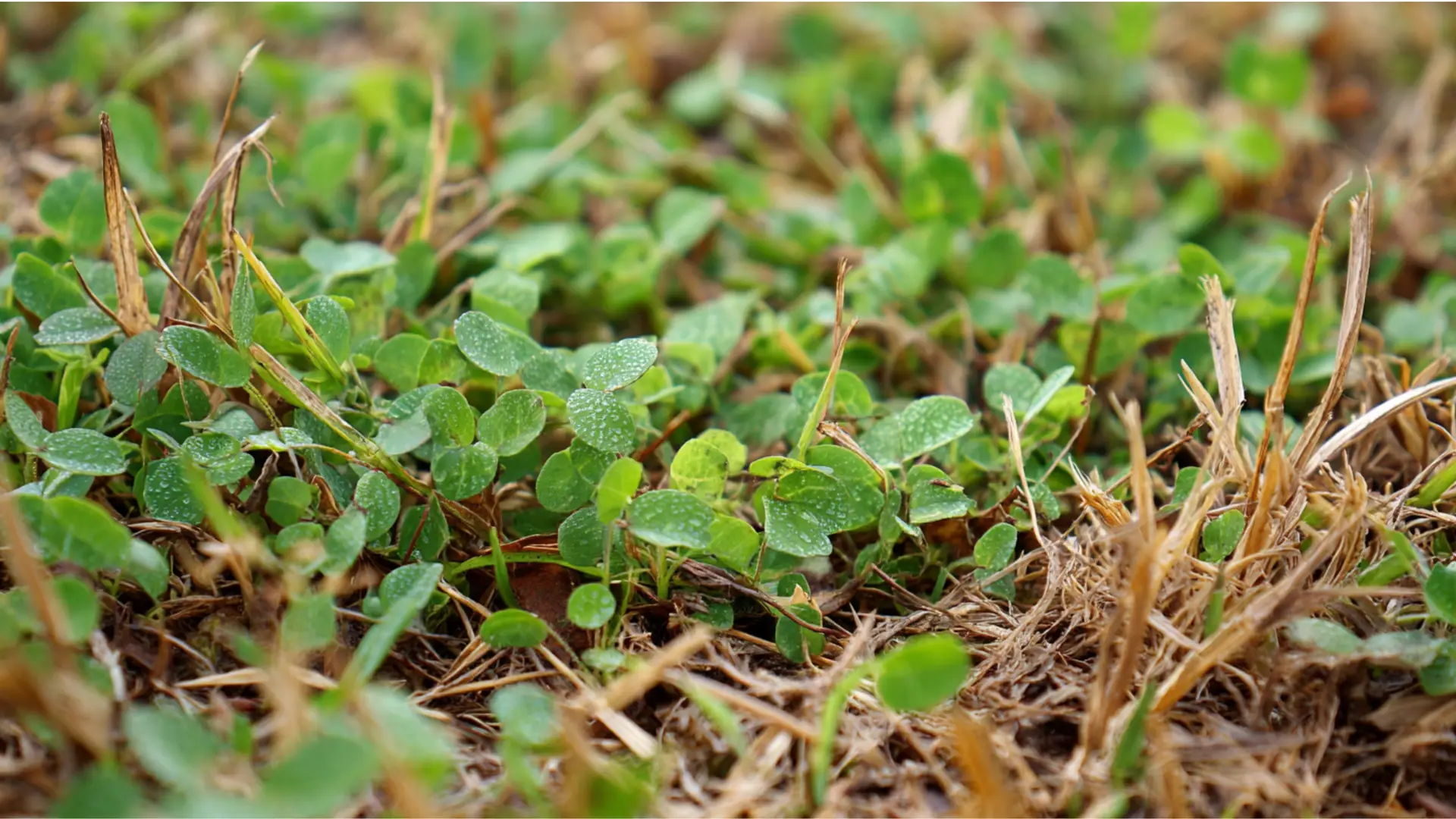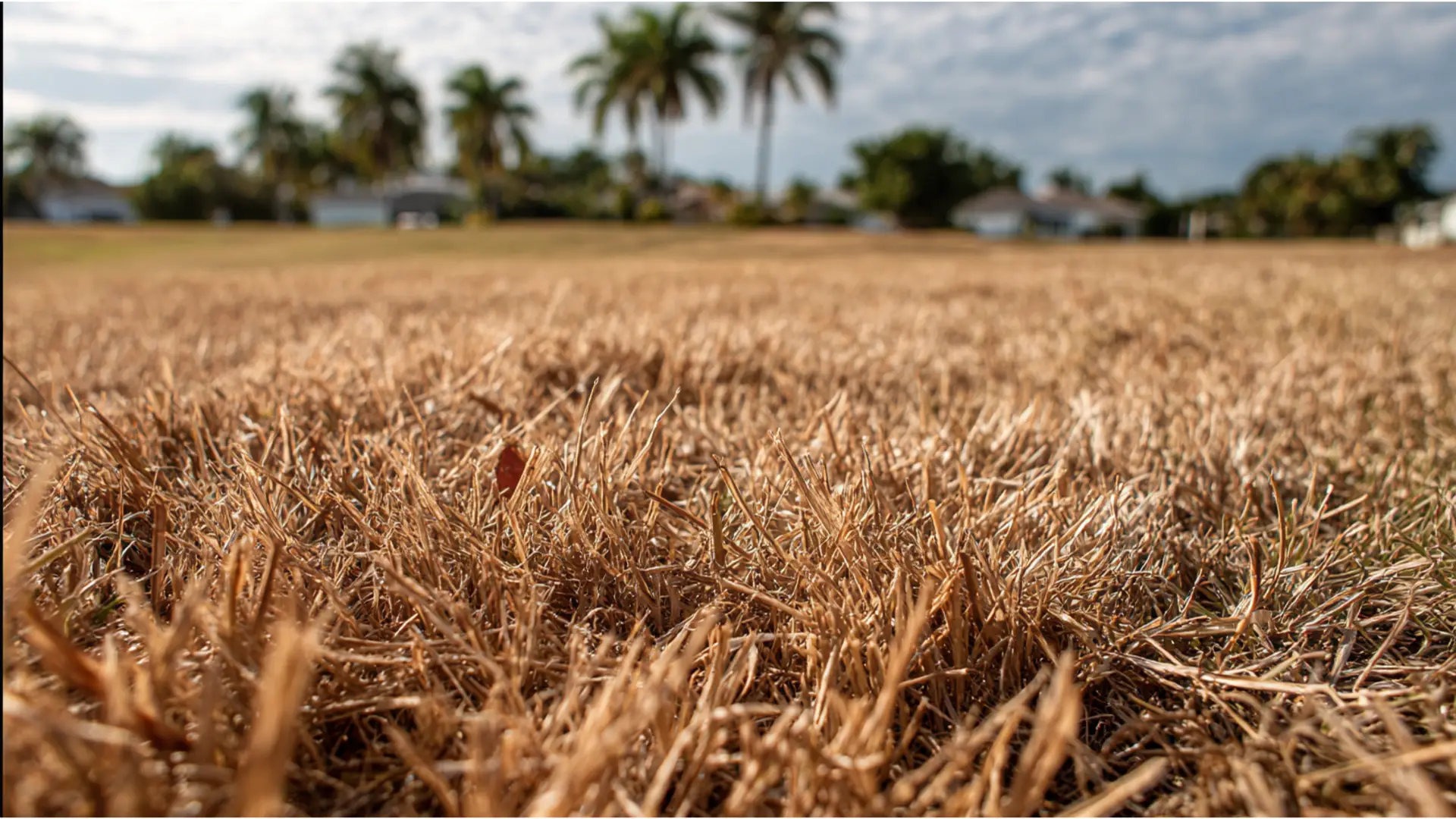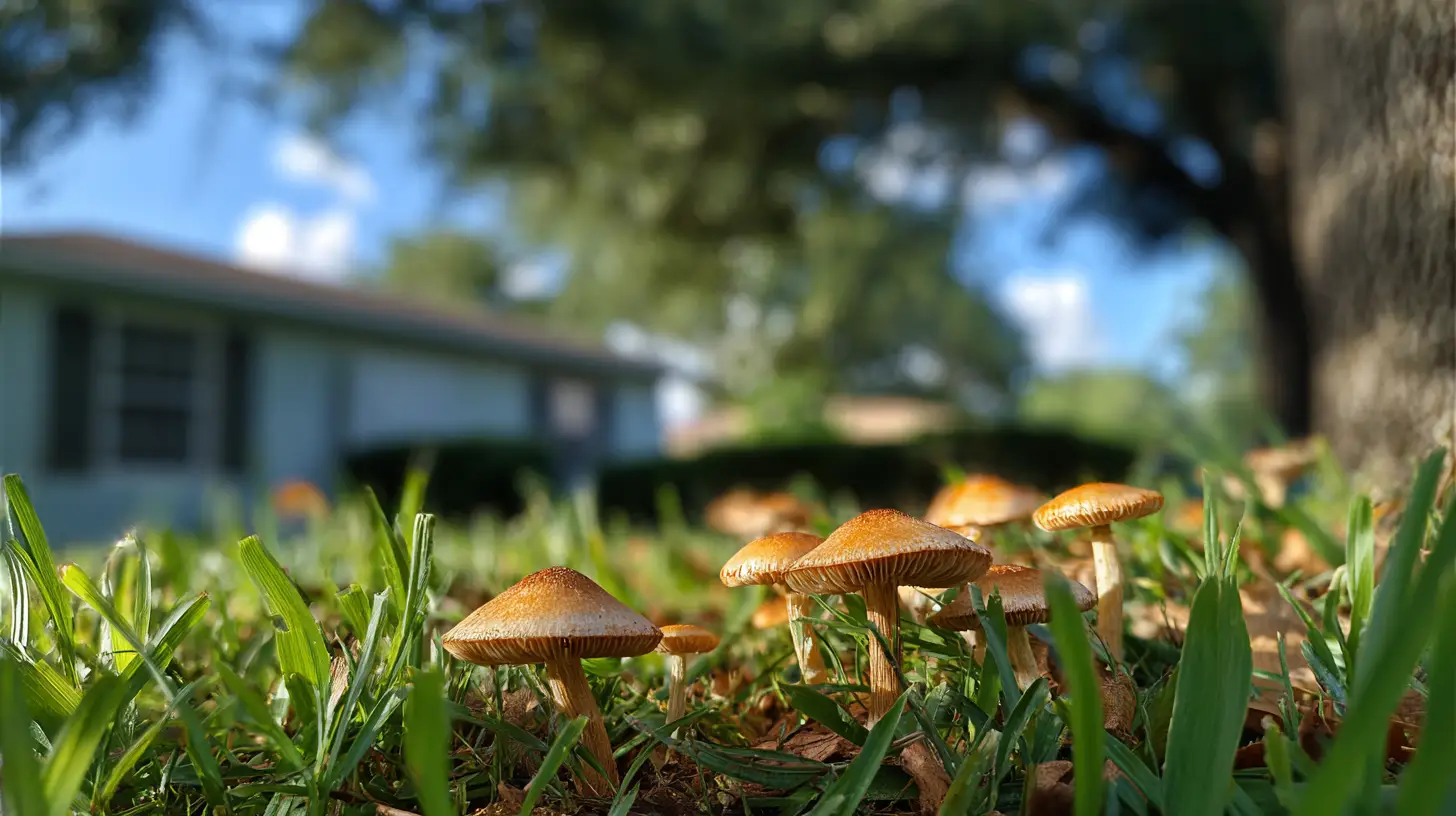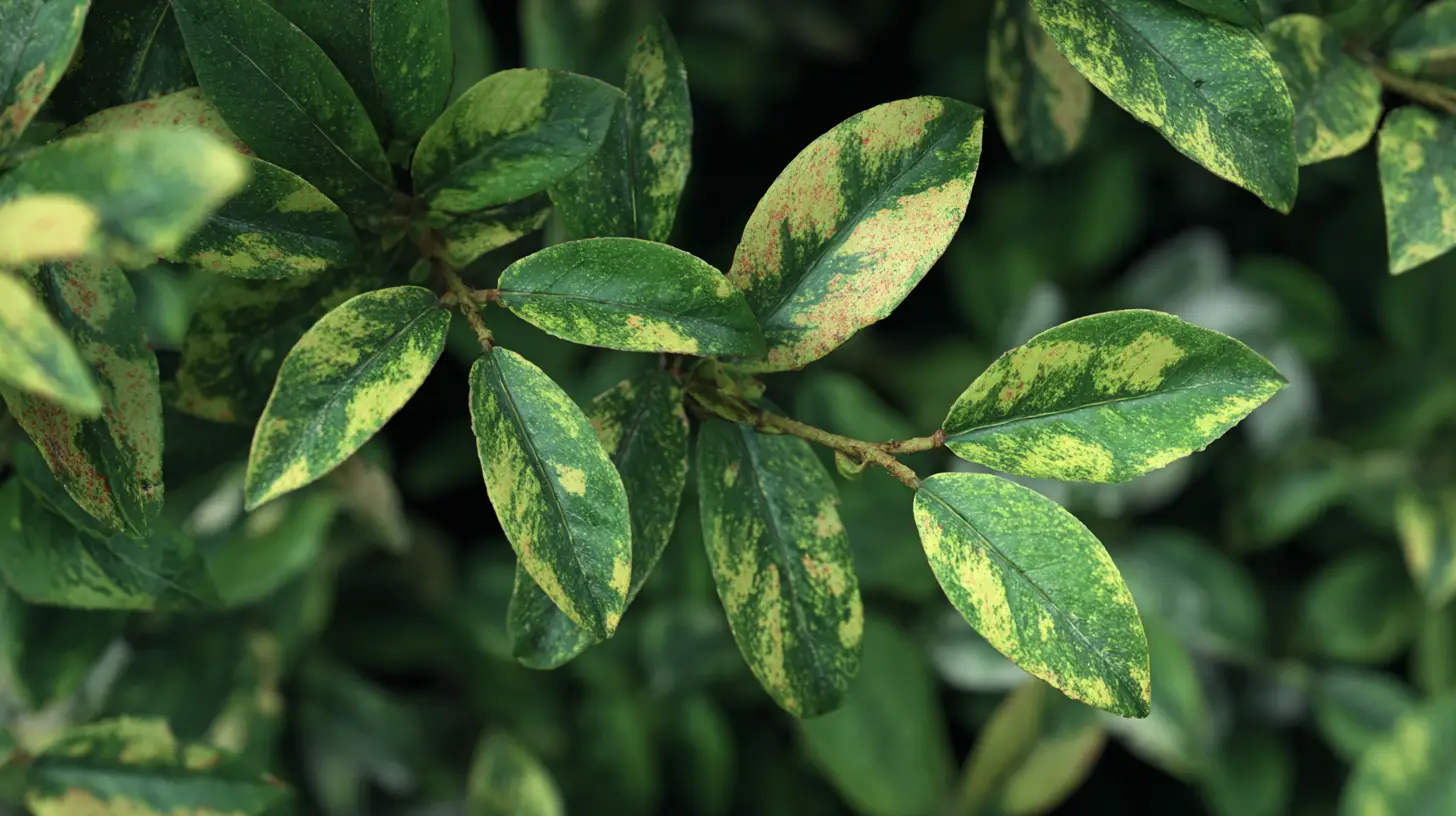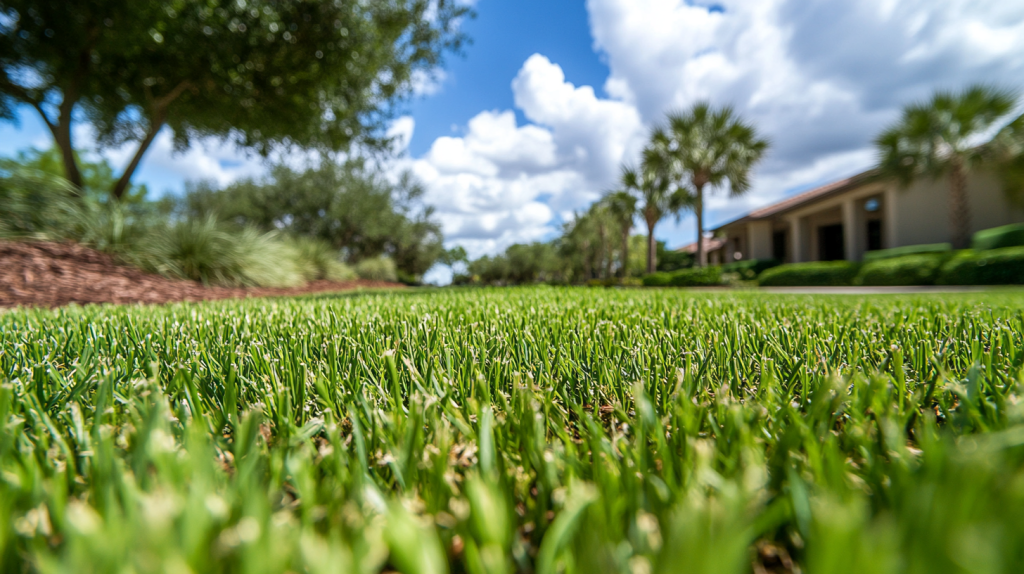
Table of Contents
Liquid aeration sounds like one of those too-good-to-be-true lawn care solutions that promise to fix everything wrong with your grass using just a spray bottle and some wishful thinking. And honestly? Your skepticism isn’t totally misplaced.
But before you roll your eyes and click away, hear me out. While liquid aeration isn’t the miracle cure some lawn care companies want you to believe, it’s not complete snake oil either. Especially here in Lakewood Ranch, where our sandy soil and year-round growing season create some pretty specific lawn challenges.
Let’s cut through the marketing hype and talk about what liquid aeration actually does, when it makes sense, and when you’re better off sticking with the old-school approach of poking holes in your yard.
Key Takeaways
- Liquid aeration is maintenance, not magic. It works best for ongoing soil health rather than fixing serious problems. Think of it as a vitamin for your lawn, not emergency surgery.
- Timing and frequency matter. Unlike core aeration’s once or twice yearly schedule, liquid aeration works best with consistent applications every 4-6 weeks during growing season.
- Know your soil’s limits. Lakewood Ranch’s sandy soil responds well to liquid treatment, but areas with heavy foot traffic or serious compaction still need mechanical aeration.
- Manage expectations. Results from liquid aeration build over time. Don’t expect the immediate visual impact you’d get from core aeration.
- Consider your priorities. If appearance during treatment matters (and in our community, it often does), liquid aeration’s minimal disruption is a real advantage.
- Don’t skip the fundamentals. Liquid aeration works best when combined with proper mowing height, smart watering, and appropriate fertilization – it’s not a substitute for basic lawn care.
The smartest approach? Start with an honest assessment of your lawn’s condition. Minor issues can benefit from liquid aeration’s gentler approach, while major problems need more aggressive intervention first.
What Liquid Aeration Actually Is (Spoiler: Not Magic)
Liquid aeration is basically a cocktail of ingredients designed to break down compacted soil particles from the inside out. Think of it as a soil conditioner rather than actual aeration.
The typical liquid formula includes:
- Wetting agents (often made from yucca or soap-like materials) that help everything penetrate deeper
- Humates and kelp that feed beneficial soil microbes
- Enzymes or bacteria specifically designed to break down thatch
Instead of physically pulling plugs out of your lawn like traditional core aeration, liquid aeration works chemically to loosen soil structure and improve water and nutrient movement. It’s less dramatic, but that doesn’t necessarily mean it’s less effective.
The Honest Benefits for Lakewood Ranch Lawns
Here’s where liquid aeration actually shines in our neck of the woods:
- Your lawn stays pretty during treatment. No ugly soil plugs scattered across your St. Augustine grass for weeks. This matters more than you might think in a master-planned community where appearances count.
- It works with our sandy soil. Lakewood Ranch’s naturally sandy soil responds well to the deep penetration that liquid aeration provides. The solution can work its way down further than mechanical aeration typically reaches.
- You can do it more often. While core aeration is usually a once or twice-yearly event, liquid aeration can be applied every 4-6 weeks during growing season. In Florida, where grass grows pretty much year-round, this flexibility is genuinely useful.
- It’s DIY-friendly. No heavy equipment rental, no timing around soil moisture levels. Just mix, spray, and wait for results.
- It plays nice with our water. The hard water from the Floridan Aquifer doesn’t seem to interfere with liquid aeration effectiveness, which is good news since most of us are dealing with mineral-heavy water.
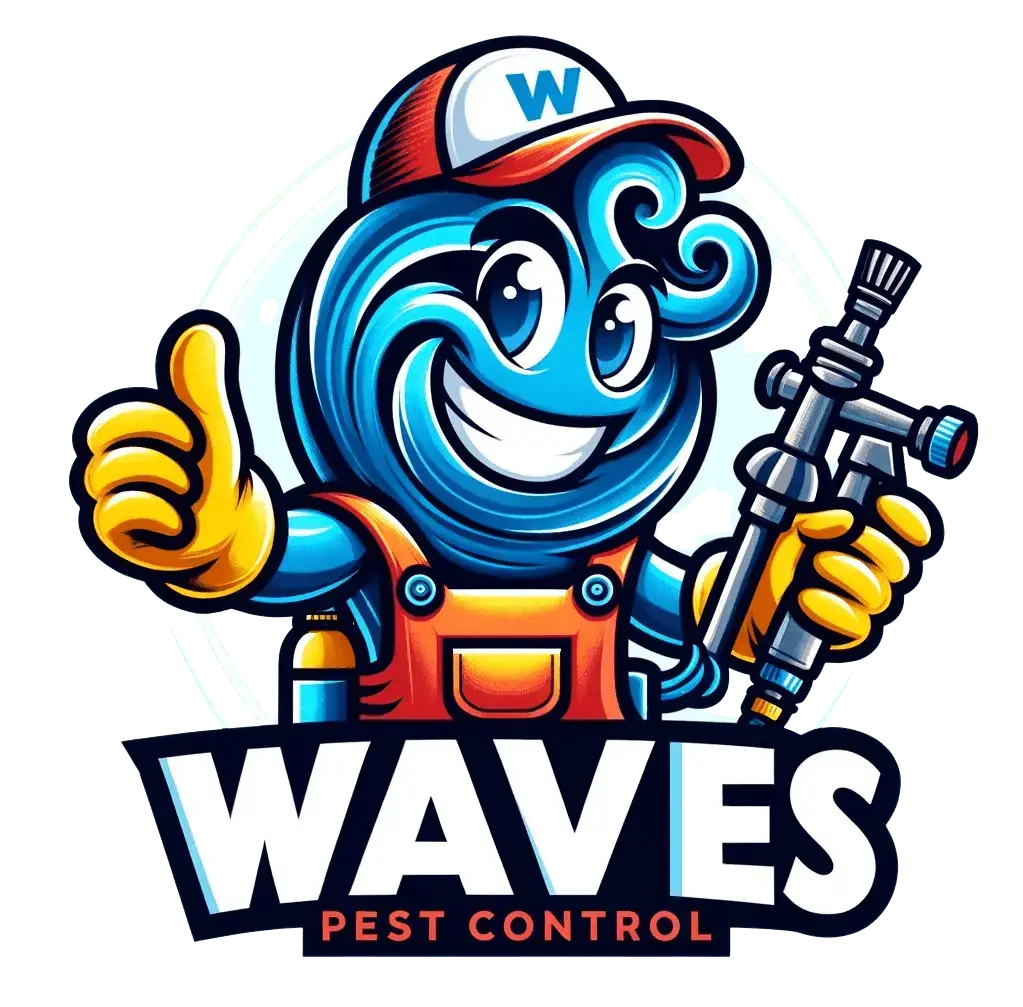
Get Pest-Free Today!
Trust Waves Pest Control for expert pest solutions in Florida. Call now or request your free quote online!
Request a QuoteThe Reality Check: Where Liquid Aeration Falls Short
Now for the less exciting truth. Liquid aeration has some real limitations that lawn care marketing conveniently glosses over:
- Science is still catching up. There’s limited research proving liquid aeration works as well as traditional methods. Some soil experts remain skeptical about its long-term effectiveness compared to core aeration.
- Severe compaction needs bigger guns. If your soil is seriously compacted – think areas near driveways, walkways, or anywhere with heavy foot traffic – liquid aeration probably won’t cut it. You’ll still need core aeration for the tough spots.
- Results take time. Core aeration gives you pretty immediate visual improvement. Liquid aeration is more of a slow burn. You might not see dramatic changes for several applications.
- It can’t replace everything. For lawns with major thatch buildup (over half an inch), significant drainage issues, or really heavy clay soil (less common here but not unheard of), you’ll likely need mechanical aeration too.
- Over-application is a real risk. More isn’t always better. Too much liquid aeration can create overly porous soil that leads to weak root systems.
When Liquid Aeration Makes Sense vs. When You Need the Real Deal
Choose liquid aeration when:
- Your soil compaction is mild to moderate
- You want to maintain your lawn’s appearance during treatment
- You’re dealing with minor thatch issues
- You want something you can do regularly without major disruption
- Your main goal is ongoing soil health maintenance
Stick with core aeration when:
- You have heavily compacted soil from foot traffic or clay content
- Water pools on your lawn after irrigation or storms
- You have significant thatch buildup
- You need immediate, dramatic results
- It’s been years since your last mechanical aeration
Consider combining both when:
- You want the immediate impact of core aeration plus the long-term benefits of liquid treatment
- You have mixed soil conditions across your property
- You’re willing to invest in a comprehensive soil health strategy
Lakewood Ranch-Specific Considerations
Our local conditions make liquid aeration more viable than in some other areas:
- The sandy soil factor. Our naturally well-draining soil means liquid solutions can penetrate effectively without getting stuck in heavy clay layers.
- Year-round growing season. The ability to apply liquid aeration every 4-6 weeks actually makes sense when your grass doesn’t really go dormant.
- Community standards. Let’s be real – nobody wants soil plugs sitting on their lawn for weeks in a neighborhood where curb appeal matters.
- Hard water reality. The high mineral content in our water from the Floridan Aquifer can actually provide beneficial calcium and magnesium, but it can also create nutrient imbalances. Liquid aeration’s focus on improving nutrient uptake can help balance this out.
The Bottom Line for Your Lakewood Ranch Lawn
Liquid aeration isn’t a miracle solution, but it’s not useless either. It’s best thought of as a maintenance tool rather than a fix for serious problems.
If your lawn is in decent shape and you want to keep it that way without the hassle and appearance issues of core aeration, liquid treatments can be genuinely helpful. The cumulative effects over time can improve soil structure, water retention, and overall grass health.
But if you’re dealing with serious compaction, drainage problems, or haven’t aerated in years, don’t expect liquid aeration to solve everything. You’ll likely need traditional core aeration first, then liquid treatments for ongoing maintenance.
The key is being realistic about what you’re trying to achieve and honest about your lawn’s current condition. Liquid aeration works best as part of an overall lawn health strategy, not as a standalone miracle cure.
Frequently Asked Questions (FAQs)
Is liquid aeration just expensive soap?
Not exactly, though wetting agents (which are soap-like) are one component. Quality liquid aeration products also include enzymes, beneficial bacteria, and soil conditioners that work together to improve soil structure over time. But yes, some products are basically overpriced surfactants.
How long before I see results from liquid aeration?
Unlike core aeration where you might see improvement in a few weeks, liquid aeration is more gradual. Most homeowners notice better water penetration and grass color after 2-3 applications, which typically means 8-12 weeks of consistent treatment.
Can I apply liquid aeration myself or do I need professional service?
DIY application is totally doable with a garden sprayer. The key is following application rates carefully and applying to slightly moist soil for best penetration. Many homeowners find this easier than renting core aeration equipment.
Will liquid aeration work on St. Augustine grass?
Yes, St. Augustine responds well to liquid aeration, especially our sandy soil conditions. The improved water and nutrient penetration can help St. Augustine develop deeper roots and better drought tolerance.
How does Lakewood Ranch’s hard water affect liquid aeration?
Our hard water from the Floridan Aquifer doesn’t seem to interfere with liquid aeration effectiveness. In fact, the calcium and magnesium in hard water can complement the soil conditioning effects, though you should still monitor for mineral buildup over time.
Should I core aerate first, then use liquid aeration?
If you haven’t aerated in years or have significant compaction, starting with core aeration can help liquid treatments penetrate more effectively. Think of core aeration as opening the door and liquid aeration as maintaining an open pathway.
Can I overdo liquid aeration?
Yes! Applying too frequently or at higher concentrations than recommended can create overly porous soil that doesn’t support strong root systems. Stick to manufacturer guidelines and watch for signs like excessive drainage or unstable turf.
Is liquid aeration worth the cost compared to core aeration?
Cost-wise, DIY liquid aeration can be cheaper long-term, especially if you’re doing regular applications. Professional core aeration might cost more upfront but provides more immediate, dramatic results. The “worth” depends on your lawn’s needs and your maintenance preferences.

